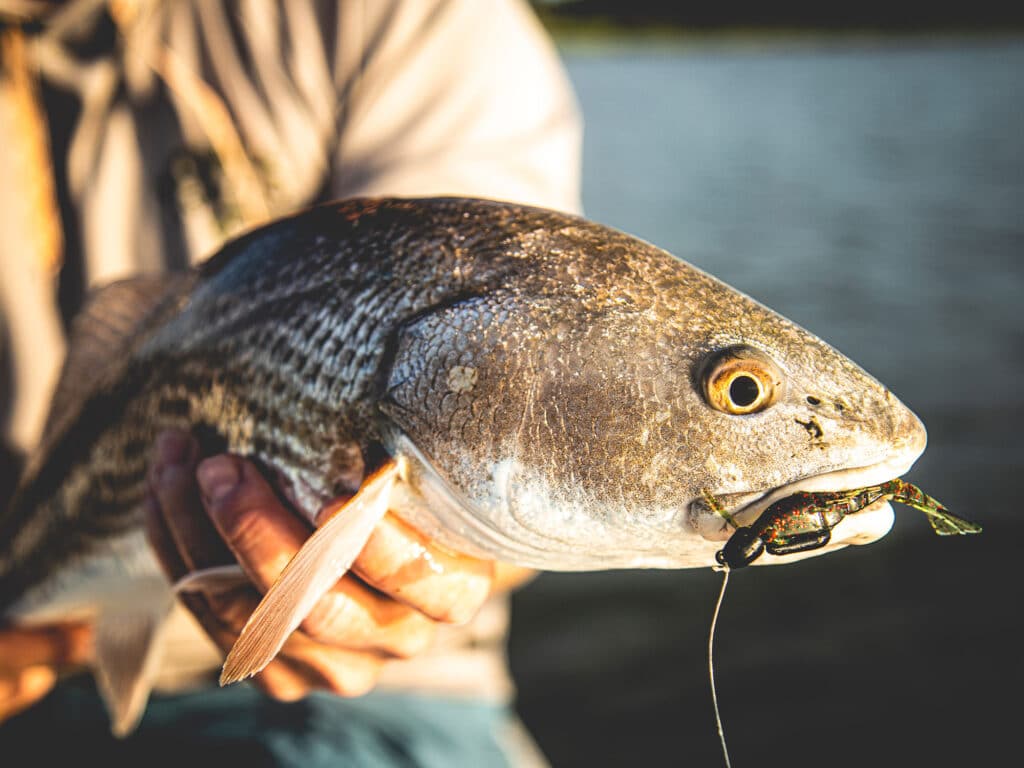
The Charleston area offers history, good food and good fishing, all in abundance. Visitors can take advantage of all three at any time, though the fishing is the most variable by season and conditions. One of the most appealing attributes of fishing the Charleston area is its variety of opportunities.
Inshore waters offer the three mainstays — redfish, seatrout and flounder — in the shallow mud and harder grass flats. Low-country sight-casting excitement on fly and light tackle becomes more likely in cold weather when waters clear. While shallow-water fish aren’t likely to be monsters, the harbor’s deep, flowing waters give anglers a great shot at big bull reds on bait or jigs, though you’ll want to stow the ultra-light gear here. Lots of big bull sharks hang around and other species as well.

Head 40 or 50 miles offshore to either drift-and-jig for grouper and more (including various species of snapper, amberjack, African pompano and blackfin tuna) or put out lines to troll for blue-water big game — wahoo, billfish, mahi. No doubt, there’s tremendous potential when fishing speed jigs and slow-pitch jigs over even minimal ledges and rockpiles offshore here. Getting to these bottom fish grounds requires a longer run than some anglers care to make, which may help explain the consistent productivity. It’s also well worth keeping in mind the outstanding swordfish fishery that has developed out of Charleston. Anglers fish Edisto Banks to the Charleston Bump, day and night, catching swords to 500 pounds and more.
A point of interest: This very fishy area is home to two major fishing-tackle manufacturers — Shimano and Z-Man.
Planning a Trip

When to Go: You can find rewarding action any month of year. But it’s worth understanding some seasonal differences that can help you determine what species you’ll target and how. In cold winter months, inshore waters become clear, and spotting schools of reds is feasible, but they’re more lethargic and getting them to eat can be trickier (fish “low and slow” in local parlance). When waters warm, redfish will move onto mud and hard-bottom grass flats to feed; look for fins, tails and wakes. Summer’s a great time to fish the harbor for big bull reds. Offshore fishing is worthwhile anytime the weather permits it — that’s a bit iffier in the winter. Also, be aware of the annual closure for the harvest of grouper. Plus, red snapper remain closed in federal waters all year at the time of this writing.
Where to Go and How to Get There: Many major airlines fly into Charleston International Airport daily. For those driving, Charleston is a mere hour or so east of Interstate 95.
What to Expect: The number of inshore guides and offshore charters gives anglers plenty of choice. One great option is RedFin Charters. The wide-ranging charter operation offers inshore options for redfish and trout, but also nearshore, offshore, shark and fly-fishing trips. They likely have you covered for any species you want to target it in the area.
Besides the ever-popular redfish, fishing inshore and the harbor holds the promise of other species: trout, flounder, sheepshead, black drum, tarpon, sharks (bull, blacktip, bonnethead), Spanish mackerel, bluefish, jacks and ladyfish. If fishing with a licensed guide, you’ll need no separate fishing license; otherwise, obtain your South Carolina license.
Far from being limited to fishing, Charleston is a southern center of history and culture. Among the “other” activities might be a visit to the Patriots Point Naval & Maritime Museum and the South Carolina Aquarium, a walk along Waterfront Park or King Street, or a visit to any of several beaches. You’ll find accommodations from budget to five-star, and fabulous restaurants. Never visit Charleston without indulging in a local favorite: she-crab soup.









